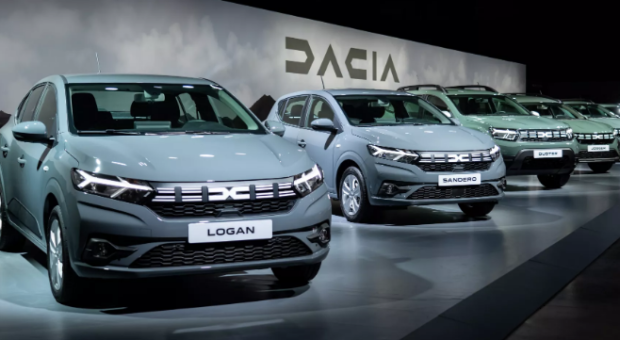
Being able to choose a new car at a smart price and spirit that will go wherever the mood takes you, even down the wrong road; enjoy city or country driving on your own, with a companion or the whole family, using the same car: the Dacia Sandero meets all your needs and desires. More than just a car, it’s an iconic market player, the first choice of private customers every year in Europe since 2017. So, how has this model that appeared in 2008 succeeded over three generations in attracting all these buyers with very different profiles (2.6 million cars sold!) without changing its fundamental values?
The best-selling car with private customers in Europe since 2017, the Dacia Sandero has marked its era by its extraordinary commercial success. After three generations and a popularity that continues to grow, the model has achieved iconic status in the automobile market. So, what are the secrets of its success? A super-attractive price, obviously, but also a contemporary design that combines robustness, quality and modernity, together with smart solutions that it was often the first to introduce.
First, let’s go back a bit to understand the origins of the Sandero success story. After the Logan in 2004, Dacia decided to bring another revolutionary model to market in 2008: the Sandero, a robust, agile city car for all. A year later the Stepway version hit the road, announcing the brand’s first steps into the outdoor market. Thanks to its generous dimensions, high ground clearance, practical design and always affordable price tag, it won the hearts of ‘smart’ buyers, with a special approval rating for its new safety features, making the Sandero the best-selling car in Europe’s private customer market as of 2017.
In 2021, the success story continued with the third-generation Sandero, its appeal reinforced by a bolder and more contemporary design, coupled with smart and innovative equipment – in a nutshell, even ‘cooler’, and still super-affordable
The Stepway version exceeded all expectations. Versatile, more practical than a traditional city car for off-road outings but less bulky than an SUV, it appealed to all customer categories. Today, the Stepway version accounts for 66% of Sandero sales.
Three generations of the Sandero have succeeded each other, taking the total number of vehicles sold to 2.6 million since the model was launched. Its top five markets in Europe are France, Germany, Italy, Spain and the United Kingdom, and today 42% of the cars we sell run on eco-friendly bi-fuel petrol and LPG engines. And a little manufacturing secret: Dacia Sandero is produced in three factories, on four lines. Every minute, a vehicle rolls off the line
But this success owes nothing to chance. When engineering, design and product heads at Dacia decide to come up with a new model without changing the DNA that has made the brand so successful, they pursue every avenue. All the solutions are put under the microscope to find the one that best meets the customer’s expectations, i.e. the most practical at the most affordable cost. Below we list ten examples of “design-to-cost” and smart solutions that have contributed to the model’s reputation and its commercial success.
1/ Modular roof bars – a smart innovation that capitalises on Dacia know-how! Simply adjust the attachment to pivot from longitudinal to transverse bars. No need to buy a second set of bars to stow a roof box, bicycles or skis. This innovation made its first appearance in the Dacia range with the third Sandero Stepway generation and was then deployed on other models.
2/ The Media Control system, which lets you use your own smartphone as a multimedia screen in the car alongside the radio, thanks to development of a clever solution: a docking station directly integrated into the dashboard, conceived from the start of the project.
3/ The simple and practical dashboard, fitted with an element that makes a huge design difference: a textile band integrated over the whole length of a zone that is both visible and tactile. The customer gets an attractive interior without having to pay for expensive materials.
Source, please read more
















